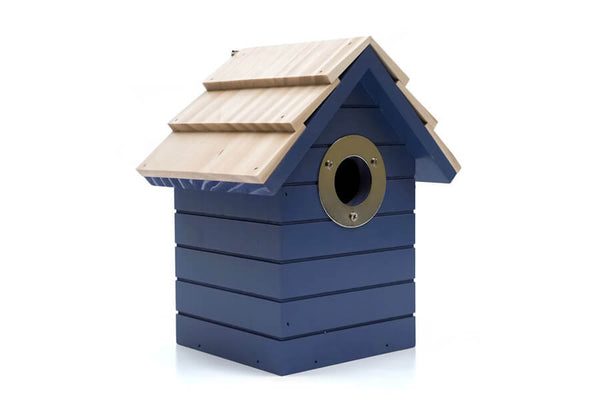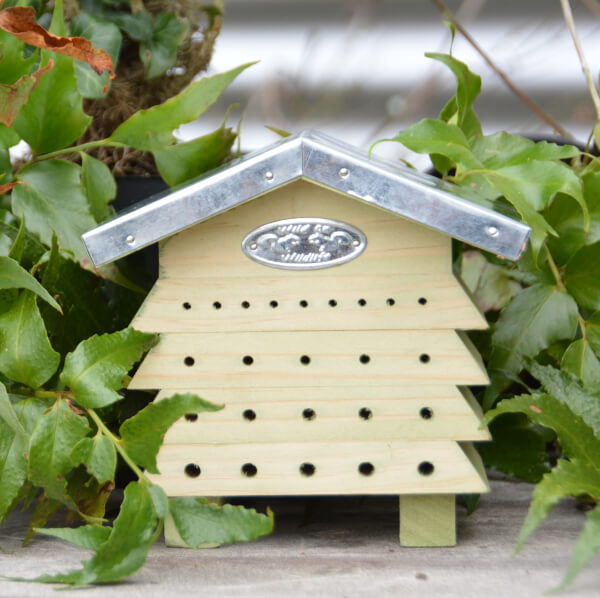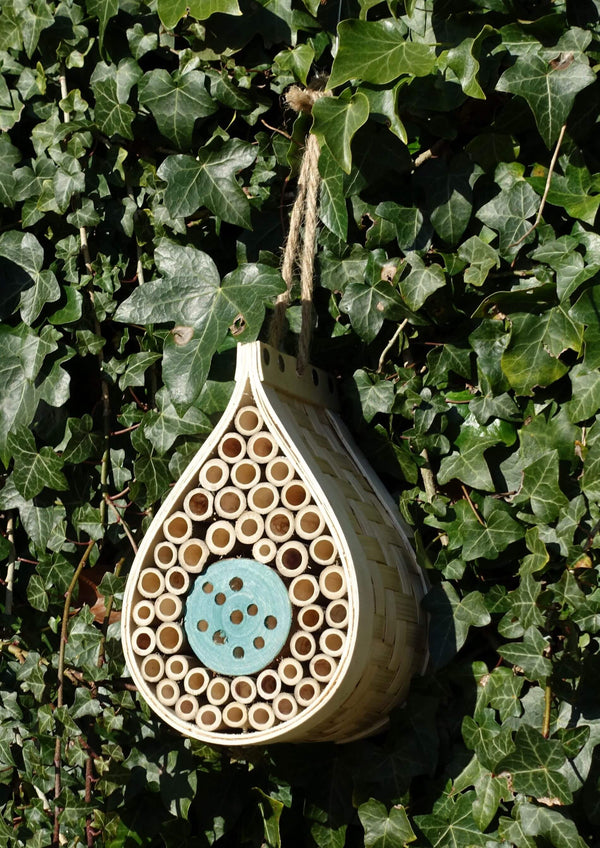Understanding The Importance Of Biodiversity: How Every Species Counts
Across the world, natural biodiverse ecosystems have declined by an average of 47% - this is everything from coral reefs to forests being cut down and this affects the stability and resilience of our ecosystem - the loss of these natural habitats is mainly down to human activities.
The term Biodiversity is defined as all living things and how they interact with the environment. Many scientists split biodiversity into three levels: species, genetic and ecosystem. These three things interact with each other and all work together to keep a healthy environment.
Every little thing, no matter how big or small, plays a part in the biodiversity of our planet - all living things are connected and work together to play the part. Within an ecosystem, each species has a role to fulfill - this could be pollination, seed dispersal or predatation - with out this, the ecosystem would no be healthy or stable. In each ecosystem there is a food web and species are either consumers or a food source for others - this demonstrates the flow of energy within this system.
Biodiversity supports the resilience to environmental change and disturbances because they contain a great variety of species with different functional traits and adaptions.
The Rich Tapestry of the World's Biodiversity
Around the world, there is an amazing diversity of life forms, from microscopic organisms to mammals that tower over us, it's incredible!
It's easy to forget about the smaller living organisms - but they all play a really important role to life on earth and the biological diversity of our ecosystems is crucial to survival.
Microorganisms
These tiny lifeforms are invisible to the naked eye. Some species include bacteria, archaea and fungi. Although small in size, they are incredibly diverse and play critical role in the ecosystem.
For example, bacteria and archaea are essential for soil fertility, nutrient cycling and the decomposition of organic matter.
Plants

These multicellular organisms produce energy from sunlight. From mosses to towering trees - we all know the importance of different plants. They are a primary producer in most ecosystems and provide food and habitat for other species.
They also play crucial roles in regulating the Earth's climate, purifying air and water, and stabilising soil.
Invertebrates
Invertebrates are animals without a backbone, comprising a vast majority of animal species on Earth; including spiders, worms and crustaceans. They inhabit pretty much every habitat on earth and play diverse ecological roles.
Insects, for example, are pollinators, decomposers, herbivores, and predators, influencing ecosystem dynamics and providing valuable ecosystem services.
Fish and Other Aquatic Organisms
Fish, along with other aquatic organisms such as mollusks, crustaceans, and aquatic plants, inhabit freshwater and marine ecosystems.
They come in a wide variety of shapes, sizes, and ecological roles. Fish play crucial roles in aquatic food webs as both predators and prey, and many species provide important food resources for humans.
Amphibians and Reptiles
Amphibians and reptiles are cold blooded vertebrates that inhabit diverse terrestrial and aquatic habitats.
They include frogs, toads, salamanders, snakes, lizards, turtles, and crocodiles. Amphibians and reptiles play important roles as predators, prey, and ecosystem engineers, influencing the structure and function of ecosystems.
Birds

Birds are warm blooded vertebrates with feathers and beaks. They are found in virtually every terrestrial and aquatic habitat worldwide, from polar regions to tropical rain forests to your typical garden birds.
Birds are diverse in their ecology and behaviour, ranging from small songbirds to large raptors, waterfowl, and seabirds. They play roles in pollination, seed dispersal, pest control, and scavenging.
Mammals
Mammals are warm-blooded vertebrates characterised by mammary glands and hair or fur.
They include a diverse array of species, ranging from tiny rodents and bats to large carnivores and herbivores. Mammals inhabit virtually every terrestrial habitat in the natural world and some aquatic environments. They play diverse ecological roles as herbivores, carnivores, omnivores, seed disperses, and ecosystem engineers.
Why Every Species Counts
Every single species counts. All life on earth is connected and we all depend on each other to play our role so that our planets ecosystem can remain healthy.
The unique role each species plays, whether it's acting as a predator or prey, keeps the ecosystem stable - if they are unable to do this it can disrupt the ecological process.
Within each species, the diversity of genetics provides raw material for evolution and adaption. If there are challenging environments, genes can adapt for survival of the species.
Every species has inherent value and a right to exist independent of its utility to humans. Species have evolved over millions of years, each adapting to its unique ecological niche and contributing to the tapestry of life on Earth.
The Crisis of Biodiversity Loss
The mass extinctions and decline in the variety and abundance of plant and animal species across the world is biodiversity loss. This is one of the most press environmental challenges the human population is facing and it is creating serious implications for the ecosystem, economies including low income countries, and the well being of all life.
This loss is occurring at an alarming rate with scientist estimating the current rate of extinction is up to 1,000 times higher than the natural background rate, with endangered species disappearing at a rate unprecedented in human history. This loss affects all levels of biological organisation, from genes and populations to entire ecosystems.
The thing that is impacting biodiversity the most is driven primarily by human activity, how much biodiversity is lost is due to natural habitats destruction, pollution, climate change, over exploitation of natural resources, and the introduction of invasive species.
This loss disrupts the functioning of ecosystems and reduce resilience to changes and disturbances. Ecosystems with lower biodiversity are less able to provide essential ecosystem services, such as pollination, water purification, soil fertility, and climate regulation.
As species disappear, the stability and productivity of ecosystems are compromised, leading to negative impacts on human societies that depend on these services.
The Importance of Protecting Biodiversity
Without biodiversity, we cannot have the healthy ecosystem that we rely on to provide us with air and food. If we want to survive as a species and adapt to the world and recover from natural disasters we need that diversity.
For the well being of humans services such as pollination, soil fertility and food production are all down to biodiversity and the role each species plays. Without this, we will no longer be able to carry out many of the things we need to survive.
Biodiversity provides a vast reservoir of genetic resources that can be harnessed for agriculture, medicine, biotechnology, and other applications. Wild relatives of domesticated plants and animals contain valuable traits such as disease resistance, drought tolerance, and nutritional quality, which can be used to improve the way we do things.
How Our Gardens Can Help

Even though it may seem bigger than us, we can create biodiverse and animal friendly gardens to help continue to promote a healthy ecosystem and stable climate in our local communities.
Habitat Creation
Our gardens are a really valuable habitat for wild varieties of plant and animal species including birds, insects and mammals. You can incorporate plants, trees and shrubs to attract a range of species including pollinators into these wild areas.
If you have space, invest in a wildlife house - bird nesting boxes can enhance the value of biodiversity of your gardens and support life, and it's always nice to see a pair of blue tits making a home in your garden!
Due to habitat loss and decline of many animals, finding food all year round can be hard for many animals - so by having feeders such as bird tables or bird feeders out in your garden - you can help provide them with a reliable food source that will help them survive all year round. Remember, where there's food it's important to have a water source too - so creating a wildlife pond or getting a bird bath is the perfect addition to any wildlife friendly garden.
Pollinator Support

Many pollinators, including bees, butterflies, moths, and hummingbirds, rely on flowers for nectar and pollen.
By planting a diverse array of flowering plants that bloom at different times throughout the year, gardeners can provide essential food sources for pollinators.
Habitat loss is a major factor in the decline of these creatures - an insect hotel will provide them with the perfect environment to do both of these things and help sustain life of a million species.
Native Plant Conservation
Plant native species of plants in your garden to help conserve the local biodiversity and support the native wildlife.
Native plants are adapted to local climate and soil conditions and provide important food and habitat resources for native wildlife species. By incorporating native plants into our gardens, we can create interconnected networks of habitat that support biodiversity across landscapes.
Natural Pest Control
Biodiverse gardens are more resilient to pest outbreaks and require fewer chemical interventions for pest control.
By promoting a balanced ecosystem with a variety of plant species and beneficial insects, gardens can naturally regulate pest populations through predation, parasitism, and competition.
Carbon Sequestration
Trees, shrubs, and other vegetation in gardens help to capture and store carbon dioxide from the atmosphere, mitigating climate change. By planting trees and other carbon-sequestering plants in our gardens, we can contribute to carbon sequestration efforts and reduce our carbon footprint.
Community Engagement
Gardens can serve as focal points for community engagement and collaboration around biodiversity conservation of planet earth. Community gardens, school gardens, and public green spaces provide opportunities for people to come together, share knowledge and resources, and work collectively to enhance and protect biodiversity, and environmental quality in their neighborhoods.










